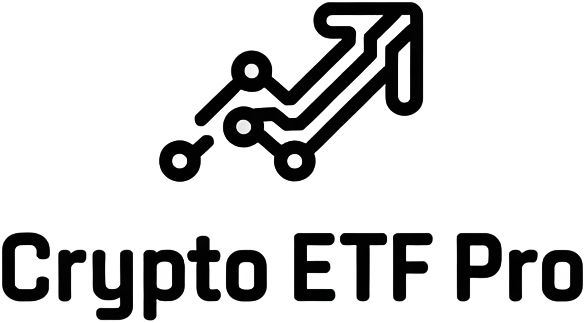
The U. S. Securities and Exchange Commission’s (SEC) approval of in-kind creation and redemption for spot Bitcoin and Ethereum ETFs on July 29,2025, marks a watershed moment in the evolution of crypto investment products. For the first time, authorized participants can now exchange ETF shares directly for the underlying cryptocurrencies, Bitcoin or Ethereum, instead of relying solely on cash transactions. This seemingly technical rule change is already sending ripples through the U. S. crypto ETF landscape, promising lower costs, greater efficiency, and even new tax advantages for investors at every level.
Bitcoin Holds Firm Above $100,000: What In-Kind Creation Means at $109,498
As of October 23,2025, Bitcoin is trading at $109,498, up $1,414 (1.31%) over 24 hours, while Ethereum sits at $3,895.46. These record-high prices underscore why efficiency matters: at these levels, even fractional improvements in trading costs or liquidity can significantly impact returns. The SEC’s in-kind creation rule brings crypto ETFs into line with traditional commodity-based ETFs, allowing market makers to swap ETF shares for actual Bitcoin or Ethereum, and vice versa, without forced cash conversions.
This is a sharp departure from the cash-only model imposed when spot Bitcoin and Ether ETPs first launched in early 2024. Back then, every creation or redemption required cash settlement, introducing extra trading layers, slippage, and tax complexity. Now, with in-kind mechanisms, ETF issuers can accept baskets of Bitcoin or Ethereum directly from authorized participants, streamlining the process and reducing friction for everyone involved.
Lower Costs, Better Tracking: The Core Benefits for Investors
Why does this matter for everyday investors? The answer lies in cost and efficiency. By enabling direct transfers of crypto instead of cash, trading fees and operational expenses are slashed. Market makers no longer need to buy or sell crypto on exchanges to fulfill ETF creations or redemptions, which means fewer transaction fees and tighter bid-ask spreads. This improved efficiency helps ETFs track the price of Bitcoin and Ethereum more closely, minimizing tracking error.
For ETF investors, this translates into potentially lower expense ratios and better price performance relative to the underlying assets. With Bitcoin above $109,000 and Ethereum near $3,900, those percentage-point differences can quickly add up. The SEC’s move also paves the way for increased competition among ETF providers, as issuers can now offer more cost-effective products to both retail and institutional clients.
Tax Efficiency: A Quiet Revolution for Institutional Crypto Flows
Perhaps the most profound (but less discussed) impact of the SEC’s in-kind creation rule is its potential to enhance tax efficiency for large investors. In traditional ETFs, in-kind redemptions allow funds to offload low-cost-basis assets without triggering taxable events, a huge advantage for institutions managing billions in assets. By extending this feature to crypto ETFs, the SEC has opened the door for similar tax optimization strategies in digital assets.
Institutions can now participate in crypto ETF flows without worrying about immediate capital gains taxes each time assets are rebalanced or redeemed. This could drive even more institutional money into Bitcoin and Ethereum ETFs, boosting liquidity and further integrating digital assets into mainstream portfolios. For a more detailed breakdown of how in-kind redemptions are transforming Bitcoin and Ethereum ETFs, see this guide.
Bitcoin (BTC) Price Prediction Table: 2026-2031 Post SEC In-Kind ETF Rule
Projected BTC Price Ranges Reflecting ETF In-Kind Mechanism, Regulatory Shifts, and Market Trends
| Year | Minimum Price | Average Price | Maximum Price | % Change (Avg YoY) | Market Scenario Insights |
|---|---|---|---|---|---|
| 2026 | $92,000 | $118,000 | $145,000 | +7.8% | ETF flows increase, post-rule volatility, macro uncertainty |
| 2027 | $105,000 | $135,000 | $170,000 | +14.4% | Wider institutional adoption, potential halving effects |
| 2028 | $120,000 | $157,000 | $200,000 | +16.3% | ETF market matures, global adoption rises |
| 2029 | $140,000 | $182,000 | $235,000 | +15.9% | Sustained inflows, improved regulatory clarity |
| 2030 | $162,000 | $210,000 | $270,000 | +15.4% | Integration with TradFi, possible new ETF products |
| 2031 | $185,000 | $237,000 | $310,000 | +12.9% | Mainstream status, competition from alternative assets |
Price Prediction Summary
The SEC’s approval of in-kind creations and redemptions for Bitcoin ETFs marks a pivotal moment, likely driving sustained institutional inflows, improved market efficiency, and tighter spreads. Bitcoin’s price is projected to trend upward through 2031, with annual average growth rates moderating as the asset matures. The minimum and maximum ranges account for both potential bear markets and explosive bull runs driven by ETF-driven demand, regulatory clarity, and broader adoption.
Key Factors Affecting Bitcoin Price
- SEC’s in-kind ETF creation/redemption policy reducing friction and costs
- Increased institutional participation and ETF inflows
- Potential for further regulatory clarity and global harmonization
- Bitcoin halving cycles impacting supply and price
- Macroeconomic factors (e.g., inflation, interest rates)
- Competition from other digital assets and tokenized products
- Technological improvements and scaling solutions
- Market sentiment and adoption trends among retail and institutional investors
Disclaimer: Cryptocurrency price predictions are speculative and based on current market analysis.
Actual prices may vary significantly due to market volatility, regulatory changes, and other factors.
Always do your own research before making investment decisions.
Tax efficiency isn’t just a footnote for hedge funds and asset managers, it’s a structural shift that can reverberate across the entire ETF ecosystem. With the in-kind mechanism now in play, U. S. crypto ETFs finally mirror the operational advantages of their gold and commodity-based peers, leveling the playing field for both institutional and retail participants. This alignment could mark the beginning of a new era for the U. S. crypto ETF market, where higher volumes and deeper liquidity become the norm, not the exception.
“The SEC’s green light on in-kind creations is a game-changer. It removes friction for market makers and sets the stage for U. S. crypto ETFs to compete globally on cost and efficiency. “: ETF industry veteran
Market Makers and Liquidity: A New Era for U. S. Crypto ETF Trading
The real winners from this regulatory shift may be the market makers and authorized participants who sit at the heart of ETF liquidity. By accepting Bitcoin or Ethereum directly, they can now arbitrage price discrepancies between the ETF and spot markets more efficiently, which helps keep ETF prices tightly aligned with their net asset value (NAV). This has already resulted in noticeably tighter bid-ask spreads for leading products and has reduced the persistent premiums or discounts that once plagued early crypto ETFs.
For retail investors, these behind-the-scenes improvements translate into more reliable pricing and easier access to digital assets through familiar brokerage platforms. The days of complicated workarounds or expensive slippage are fading fast as liquidity deepens and ETF mechanics mature. If you want to dive deeper into how these operational changes are reshaping ETF settlement and infrastructure, check out our explainer on on-chain ETF redemptions.

Looking Ahead: What’s Next for Crypto ETF Investors?
The SEC’s in-kind creation rule is more than a technical update, it’s a signal that U. S. regulators are increasingly willing to treat digital assets with the same seriousness as other commodities. As of October 23,2025, with Bitcoin holding at $109,498 and Ethereum at $3,895.46, the stakes have never been higher for efficient, investor-friendly ETF products. The expectation is that more issuers will seek approval for in-kind mechanisms, further intensifying competition and innovation in the space.
Investors should keep an eye on how these changes affect ETF flows, expense ratios, and tracking error over the coming quarters. As adoption accelerates, we may also see new product types, such as multi-asset crypto ETFs or actively managed strategies, leveraging the operational flexibility enabled by in-kind processes.
Ultimately, the SEC’s move brings U. S. crypto ETFs into alignment with global best practices, setting a new standard for transparency, efficiency, and tax optimization. For those looking to understand the full implications of this policy shift, our comprehensive resource on how in-kind creation and redemption is transforming crypto ETFs offers an in-depth look at what’s changed and why it matters.









